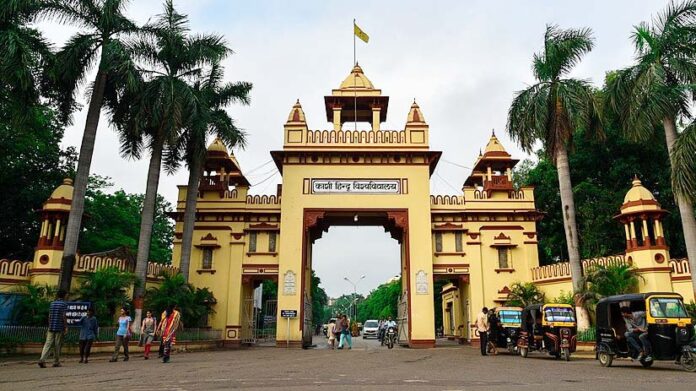Indian central universities, also known as union universities, are state-run institutions of higher learning governed by the Department of Higher Education in the Ministry of Education. They were formed by an act of the Indian Parliament. The University Grants Commission, which derives its authority from the University Grants Commission Act 1956, generally recognized universities in India. 15 professional councils are also created, each of which is in charge of a distinct component of certification and coordination. The Central Institutions Act, 2009, which established 12 new universities and regulated their purpose, powers, governance, and other aspects, also applied to central universities.
The ability to independently issue degrees to other universities is conferred. These institutions are not recognized as universities and do not have affiliations with colleges. The Department of Higher Education has administrative jurisdiction over them. Among these institutions are the Indian Institutes of Technology, National Institutes of Technology, National Law Schools, Indian Institutes of Engineering Science and Technology, Indian Institutes of Science Education and Research, Indian Institutes of Management, and All India Institute of Medical Sciences, and other independent institutions.
Let’s have a look at some of the best Central Universities listed in India
University of Delhi:
In February 1922, the University of Delhi was founded. One of the top universities in the nation, it provides undergraduate and graduate degrees in various fields in addition to short- and long-term certificate or diploma programs in several application-focused areas. The University of Delhi is a top-ranked institution of higher learning in the nation, earning praise worldwide for its cutting-edge facilities, broad educational offerings, prominent teachers, and famous past students.
The University has upheld the highest international standards and best practices in higher education during the many years of its existence. Its slogan, “Nishtha Dhriti Satyam,” reflects its long-term dedication to national development and unwavering respect for universal human principles.
Manipur University:
Manipur University, established under the Manipur Legislative Assembly Act, was incorporated as a Central University under the Manipur University Act, 2005, which came into force on October 13, 2005. Manipur Institution was established on June 5, 1980, in Imphal, in compliance with the Manipur University Act of 1980, as a teaching-cum-affiliating university having territorial authority over the whole state of Manipur.
Manipur University changed its name to Central University on October 13, 2005. The President signed the Manipur University Act No. 54 of 2005 on December 28, 2005. 116 colleges, including 2 medical colleges, are currently associated with the University. The University’s constituent college is the Manipur Institute of Technology.
Rajiv Gandhi University:
The leading university in the state of Arunachal Pradesh, Rajiv Gandhi University, has been in existence for 25 years. On February 4, 1984, Smt. Indira Gandhi, the nation’s first lady at the time, set the cornerstone for the university in Rono Hills, the site of the current campus. The organization has pursued excellence and carried out the goals set forth in the University Act since its founding. On March 28, 1985, the University Grants Commission granted its academic status under Section 2, and on April 1 of the same year, it started operating. On March 25, 1994, it received financial recognition under UGC Section 12-B.
Indira Gandhi National Open University:
IGNOU, called Indira Gandhi National Open University, is an Indian Central Open Learning University situated in Maidan Garhi, New Delhi. The institution, which bears Indira Gandhi’s name, was founded in 1985 with a $20 million budget after the Indian Parliament approved the Indira Gandhi National Open University Act 1985.
The Indian government’s IGNOU claims to be the biggest University in the world, with a total active enrolment of over 3 million students. IGNOU was established to provide high-quality higher education opportunities to all societal groups while serving the Indian populace through remote and open education.
Additionally, it seeks to enhance India’s human resources via education by promoting, coordinating, and setting standards for distant learning and open enrollment. Extension and training make up most of its academic operations in addition to teaching and research. It functions as a national resource centre and promotes and upholds distant education standards in India. The Global Mega Universities Network, initially funded by UNESCO, and the SAARC Consortium on Open and Distance Learning both have secretariats housed at IGNOU.
Central University of Karnataka:
The Central University of Karnataka was established in Gulbarga, Karnataka, by an Act of Parliament (No. 3 of 2009). In accordance with the philosophy of achieving and maintaining the highest levels of sensitivity to equity, access to college enrollment and academic excellence, and recruitment, the Central University of Karnataka began its operations in August 2009, with its territorial jurisdiction covering the entire state of Karnataka. The university is now emerging as a top national educational and research institution in the country.
Final Thought:
In the above, there is the list of India’s best Central Universities. This article mentions all the details and the educational procedures with academic facilities. Take a look at this and get yourself ready for the admission process.































